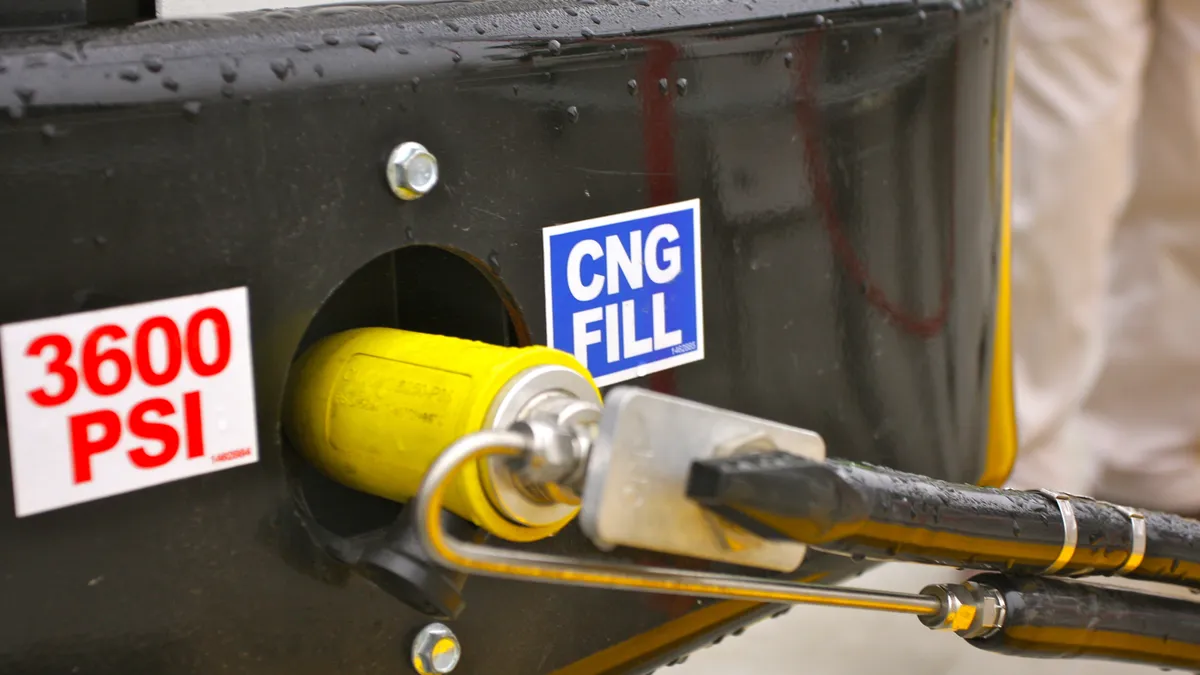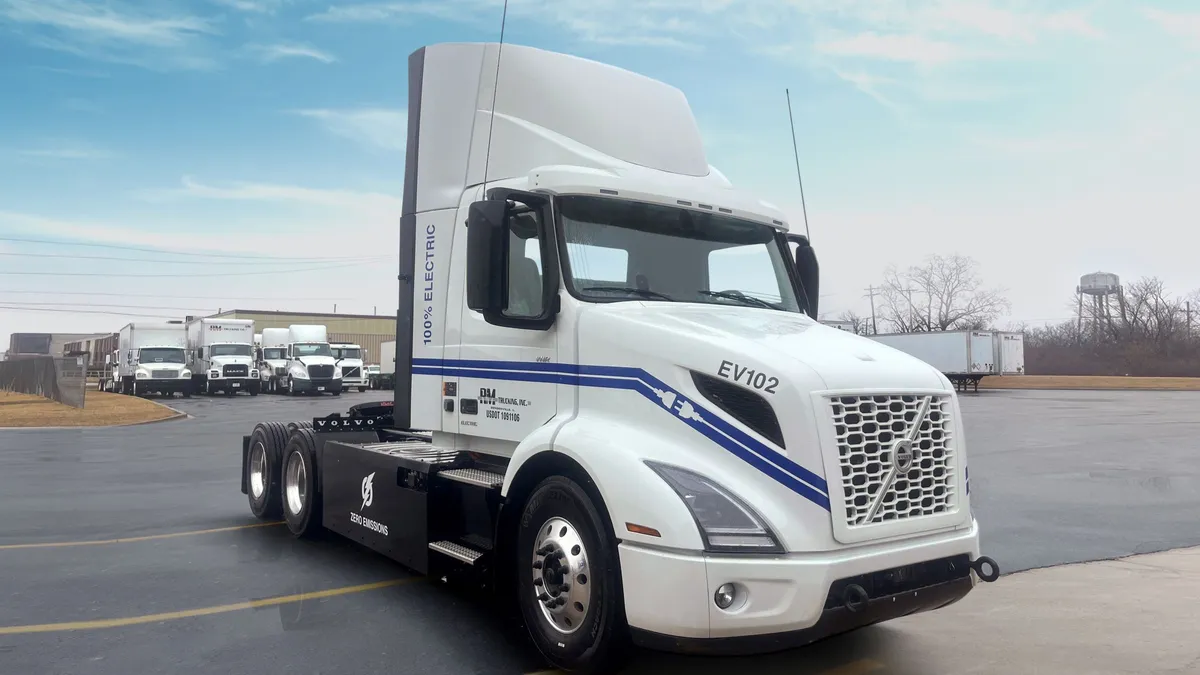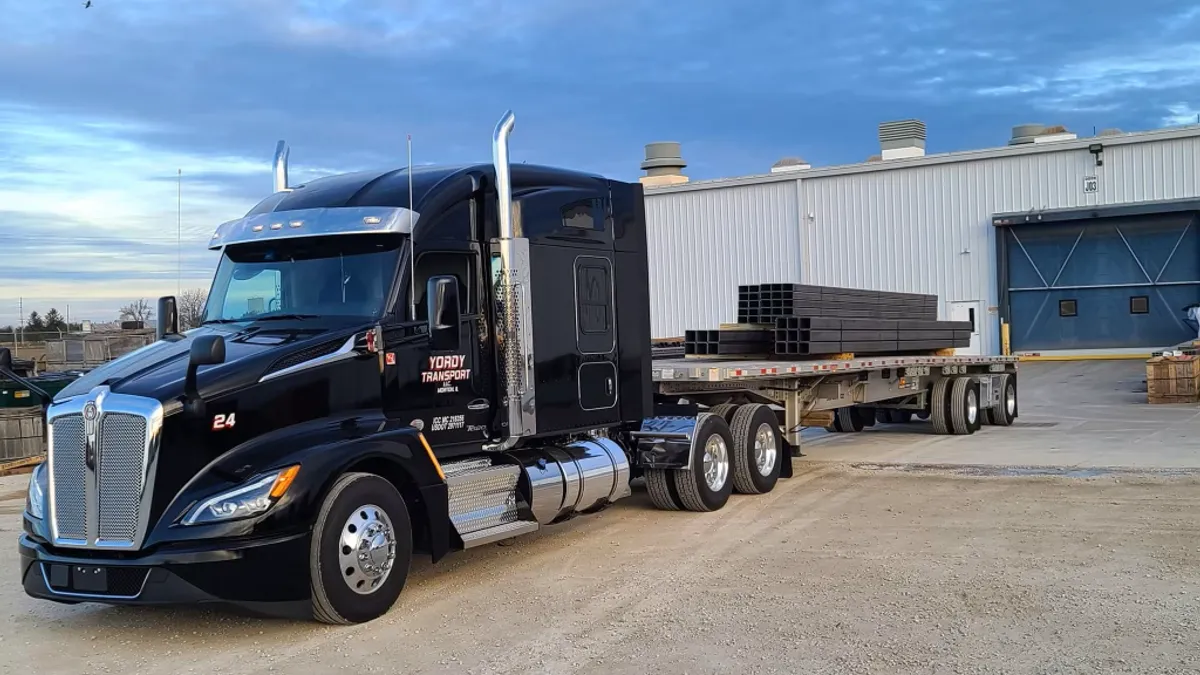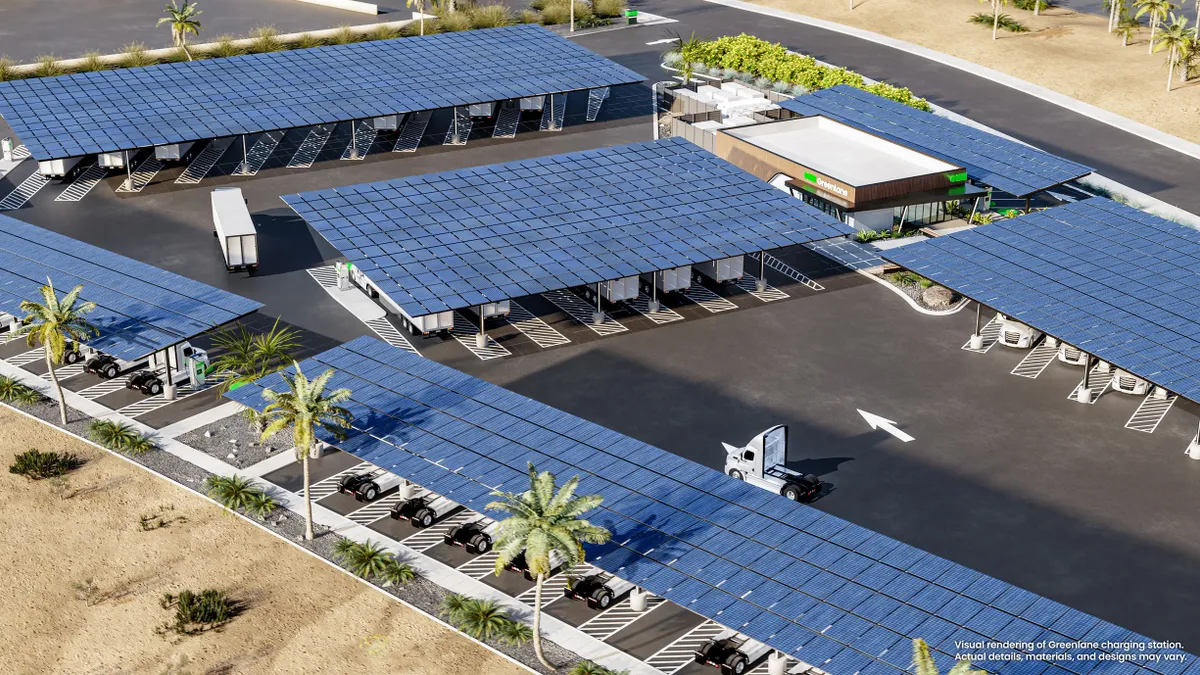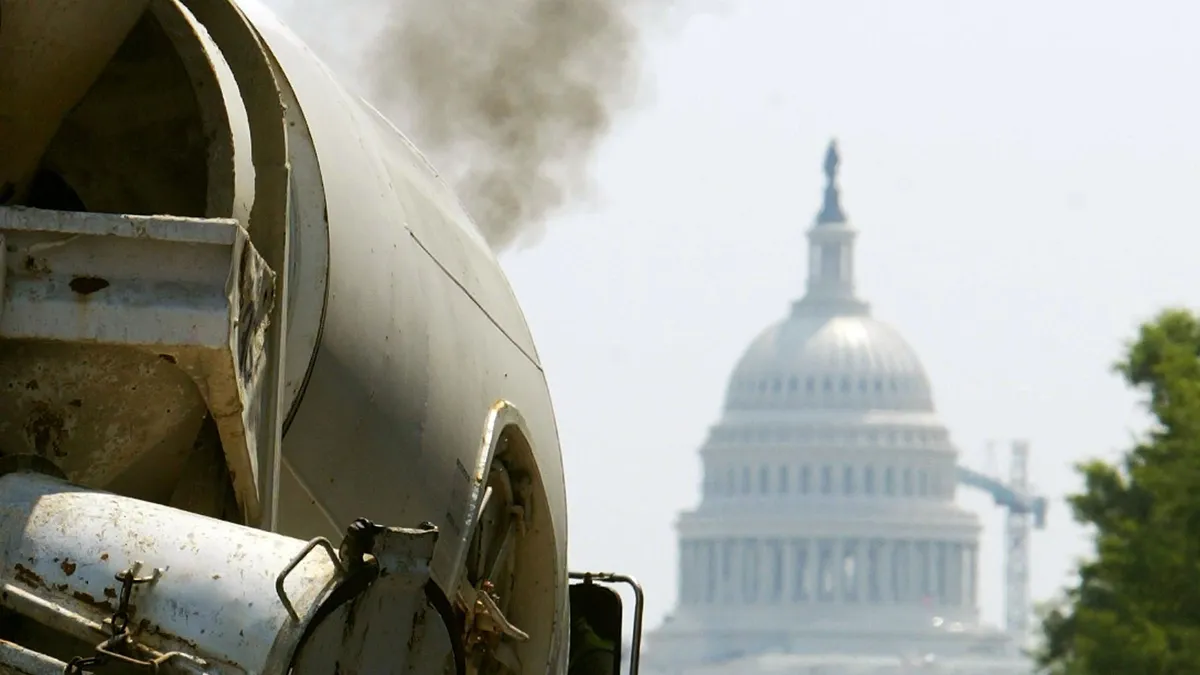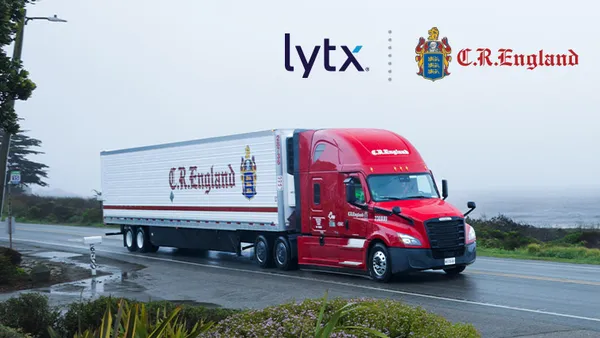Electric truck companies' pursuit of a zero-emissions future has yet to knock out vehicles powered by natural gas as the waste industry's preferred fuel alternative. But the long view increasingly focuses on electric collection vehicles, even while investment in natural gas continues in the near term.
Beyond corporate sustainability targets, state and local mandates are a factor forcing the issue. In July, 15 states and Washington, D.C., signed a memorandum of understanding to work toward a goal of 100% of medium- and heavy-duty zero-emissions vehicle sales by 2050. Cities such as Los Angeles have been similarly optimistic on the technology.
Nevertheless, many haulers have been reluctant to take the leap. According to NGV America, more than 17,000 refuse and recycling trucks in the United States run on natural gas, and about 60% of new collection trucks on order will be powered by the same. Waste Management previously said it anticipated 75% of the company's collection fleet could run on compressed natural gas, or CNG, by 2021. GFL Environmental and Waste Pro also foresee future investment.
Republic Services added 158 new CNG trucks last year, bringing the total number of vehicles running on alternative fuels to more than 20% of the company's fleet. However, during a recent announcement about plans to purchase at least 2,500 electric vehicles from Nikola — a move seen by some as a clear sign of the industry's future — President Jon Vander Ark said he considers natural gas a "bridge technology" that "doesn’t offer the zero-emission future" electric power promises.
Change of power
While some haulers are steadfastly sticking with natural-gas vehicles, other companies are forging ahead with electric experimentation.
Waste Connections recently ordered two electric chassis from Lion Electric, which will be mounted with fully electric bodies manufactured by Boivin Evolution. The company also purchased a third electric body from Boivin, which is being mounted on a diesel chassis to run as a hybrid, said Waste Connections COO Darrell Chambliss.
This marks a shift for Waste Connections, which has been running a fleet of about 1,100 CNG vehicles (11% of its fleet), but Chambliss and VP of Maintenance and Fleet Management Greg Thibodeaux have been looking for alternatives. In a sign of these shifting priorities, CEO Worthing Jackman recently dubbed CNG "just a stop on the way to EV" during a second quarter earnings call.
"Obviously, emissions will be almost non-existent with the fully electric vehicles," Chambliss said, "and the hybrid vehicle is projected to consume 30% less fuel. Also, we believe that the overall life cycle operating costs of these types of vehicles will be lower than the current configuration of collection vehicles."
Upon learning that many companies were either new at building Class 8 chassis or converting from diesel to electric, Chambliss said, "The Lion Electric/Boivin Evolution combination was the first solution we found that would provide a fully electric vehicle and eliminate hydraulics."
The two automated side loaders of which they expect to take delivery in late 2020 are designed to provide a duty cycle of a typical route vehicle and should service up to 1,200 homes each work day, carrying the same payload as the company’s diesel models.
Because EVs have no transmission, they are comfortable to operate, according to Lion VP of Marketing and Communications Patrick Gervais. The absence of a transmission contributes to quieter operation and easier maintenance. "There’s no shifting; they drive like a golf cart," he said. "There are only 20 parts in the engine versus 2,000 in a diesel engine."
But there are challenges, such as cost. "Diesel is always cheaper," Gervais said, although he noted overall operating costs of EVs typically result in savings.
Infrastructure can be another challenge, but many entities are changing their systems to work with electric utilities and provide reliable, economical charging. "There’s software available that makes sure the vehicle is charged and that all the trucks don’t charge at the same time if there are a lot of vehicles are plugged in. You can time it to avoid peak times so it’s more affordable," Gervias said.
"You can gain 80% savings on an electric truck over a diesel. It’s revolutionary."

Patrick Gervais
VP of Marketing and Communications at Lion Electric
Going electric with Class 8 trash trucks is a "viable business model," Gervais said. "The savings are so big on fuel and maintenance." He estimated $3,000 per month in maintenance for a diesel refuse truck, with an additional $2,000 per month for fuel costs. "You can gain 80% savings on an electric truck over a diesel. It’s revolutionary."
In a further sign of this shift, the California Air Resources Board recently instituted the first-ever rule to transition trucks from diesel to electric over the next two decades. The rule takes effect in 2024, and by 2045 every new truck sold in California will be zero-emission.
Gervais anticipates states will make graduated steps toward electric heavy-duty trucks, but added, "For 250 miles or less, always go with electric." While range anxiety and fear of energy shortages have hampered adoption, he insists that electric vehicles not only have enough capacity to go the distance, but also are more powerful than their diesel counterparts.
Hedging their bets
Republic is taking its own multi-pronged approach with a mixed fleet composition of alternative vehicles, pursuing Nikola's electric vehicles but also noting its use of renewable natural gas as a "bridging fuel" to lower fleet emissions in a recent sustainability report.
"Waste Management and Republic are actively participating in RNG development," said David Cox, director of operations for the Coalition for Renewable Natural Gas.
According to Cox, converting landfill gas to fuel is an efficient way to manage waste. And, in fact, federal law requires landfills over a certain size to have a collection system in place for emissions. Previously more of this gas was flared, but Cox said, "It’s an energy resource not put to productive use." Instead, he said, landfills can easily divert biogas for refinement because it’s a familiar process using equipment already in place.
A large landfill with a gas-to-energy project could fuel 40 natural-gas-powered collection trucks, according to the U.S. EPA. Because many landfills have on-site fueling stations — converting biogas into CNG, LNG or electricity — Cox said "it's not a question of either/or" in terms of vehicle types when biogas is the power source.
Testing, testing
While CNG still remains more common than electric in the industry, Lion's Gervais predicted there will be more EVs within five years, and multiple other options are being tested.
Waste Management of Southern California is planning a pilot test of Peterbilt 520EV Class 8, battery-electric automated side loaders in El Cajon, California. The test is being conducted in collaboration with TransPower, Peterbilt and the California Energy Commission to determine the feasibility of electric-powered trucks for use in waste collection, according to Waste Management Communications Specialist Mary Hartley.
In contrast, Waste Management focused on CNG trucks for a recently awarded hauling contract in Seattle that called for more use of alternative fuels. Recology, which also won a contract in the city, opted to pursue its first fleet of 100% electric collection truck instead. The California-based company estimated 50% of its fleet is powered by "renewable or alternative energy sources" and is aiming for 90% by 2022. The first vehicle used in Seattle was a Class 8 collection BYD truck fitted with a New Way Viper mid-compaction rear loader body.
"Through our discussions with the City, it was clear that they were eager to make progress on heavy-duty fleet electrification," said Quinn Apuzzo, government and community relations manager for Recology. The company ordered two of the electric rear loaders, two fully electric Class 6 delivery trucks, three electric Bolt cars and four hybrid-electric pickup trucks. It also had to install new charging infrastructure.
"For 250 miles or less, always go with electric."

Patrick Gervais
VP of Marketing and Communications at Lion Electric
According to Derek Ruckman, Recology’s VP and group manager in the Pacific Northwest, the higher initial cost of electric collection vehicles is offset by lower charging costs, especially in a region where much of the electricity comes from renewable hydropower. Thanks to a shared investment with the city and a subsidy from the state of Washington, Recology’s out-of-pocket expenses are expected to be about half the cost of a standard collection truck.
Collection will be confined to the hilly downtown area near to the facility to allow the company to evaluate changes in battery capacity based on the environment. Expectations of 200 pickups within a 40-mile range are countered with an eight-hour recharge, preventing the trucks from completing long-distance routes. "[We] hope to gain a better understanding of range, operating and maintenance costs and scalability," Apuzzo said.
Across the country, Jersey City, New Jersey, is the first East Coast municipality to purchase its own fully electric collection trucks. The city has ordered five BYD rear loaders in multiple sizes, according to Kim Wallace-Scalcione, press secretary for the mayor.
Using a $2 million grant from the New Jersey Department of Environmental Protection to purchase the trucks, Jersey City is on its way toward a goal of making 10% of its municipal vehicles electric by the end of 2020, and 100% of them electric by 2030.
In addition, the city used other grants and capital funds to pay for 24 municipal and public charging stations around the city, according Wallace-Scalcione. The five new BYD trucks will replace eight existing trucks, which she said are "our worst emission offenders, [with] 30-year-old diesel engines."


